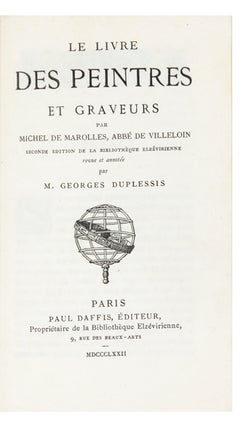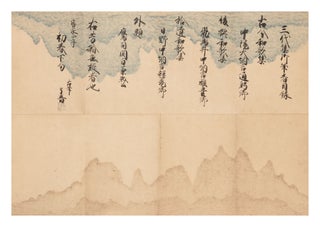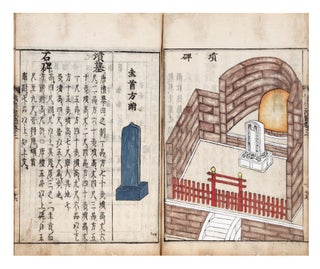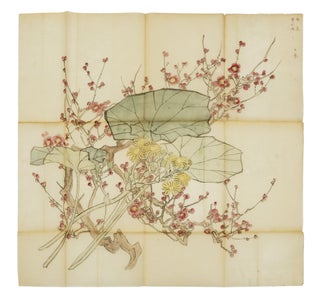How to Write a Letter in Chinese
KALLYE HUICH’AN or Gallye huichan 簡禮彙纂 [Compilation of Rites for the Bamboo Slips].
1, 6, 11, 47 folding leaves. Large 8vo, orig. yellow patterned wrappers (wrappers a little soiled), orig. block-printed title label on upper cover, new stitching. [Korea: 1870s].
First edition of this rare anonymous manual for the general education of writers of classical Chinese from late Chosŏn Korea. The term “bamboo slips” originally referred to the material supports of writing in antiquity. In classical Chinese usage of later ages — and in this title — the phrase was used metonymically in reference to the implements and genres of classical Chinese writing.
This book covers the four “rites” of capping, marriage, funerals, and sacrifices. Each rite had specific genres associated with it, which a reader of the book would learn to practice. Ample advice is included for writing letters to parents, children, teachers, and friends — and words to use when referring to these individuals — as well as servants and slaves.
While focused on the acquisition of everyday writing skills in classical Chinese, this book brings to mind a larger genre of so-called “daily use encyclopedias” (Ch.: riyong leishu 日用類書), which flourished in East Asia from at least the 16th century onward but had older antecedents. Those books provided readers, even from lower social strata, with information for use in a variety of areas. Our book, with its national viewpoint and inclusion of elements of elite writing such as classical Chinese verse, probably envisaged a rather more elite readership, or at least one that had aspirations of social advancement.
Who actually used this book is another question, of course, and the Compilation offers some hints: the pictured page from the list of “state taboos” contains marginalia that is written in part in vernacular Korean in the han’gŭl alphabet, with nouns written in Chinese characters. From what we see of the text, it appears that it concerns the ritual of entering the tablet of a recently deceased ancestor to the temple. This is also referred to in the printed text below, in the context of the succession of kings and consorts. Vernacular writing was widely practiced within the Chosŏn elite, but the brushstrokes — for whatever reason — look a bit hesitant.
On the basis of the phrases used in the list to refer to the Chosŏn kings and royal consorts, researchers have concluded that the edition dates from the reign of King Kojong but before the death of Queen Myŏngsŏng, that is, sometime between 1864 and 1895.
A very good copy. Marginal worming in the final 14 leaves. Our copy agrees with the Harvard copy (WorldCat accession number 40692963).
Price: $3,000.00
Item ID: 8452

![Item ID: 8452 KALLYE HUICH’AN or Gallye huichan 簡禮彙纂 [Compilation of Rites for the Bamboo Slips]. ANON.](https://jonathanahill.cdn.bibliopolis.com/pictures/8452.jpg?width=768&height=1000&fit=bounds&auto=webp&v=1664394794)
![KALLYE HUICH’AN or Gallye huichan 簡禮彙纂 [Compilation of Rites for the Bamboo Slips].](https://jonathanahill.cdn.bibliopolis.com/pictures/8452_2.jpg?width=320&height=427&fit=bounds&auto=webp&v=1664394794)



